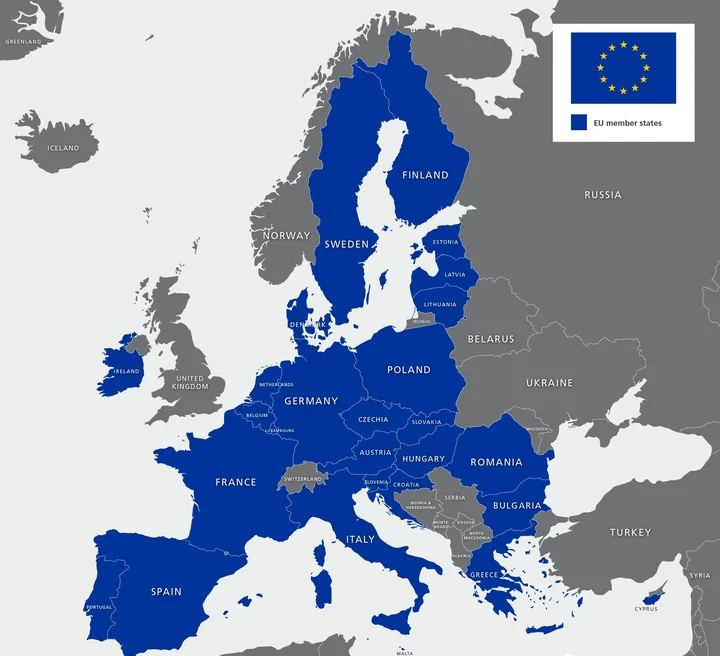
Steps for Product CE Certification
If you want to enter the European market, CE certification is an unavoidable "gateway." However, many people get overwhelmed when they hear "certification" due to the complicated process, jargon, and fear of getting scammed by unreliable agencies! Don't worry! Today, we will break down the entire ce certification process in simple terms to help you get started easily!

Understand which regULation applies to your product
CE certification is not a "one-size-fits-all" process. Different products fall under different EU directives. For example:
1. Electronic products (e.g., power banks) must comply with the low voltage directive (LVD) and the Electromagnetic Compatibility Directive (EMC).
2. Mechanical products (e.g., machine tools) may involve more complex directives such as the Machinery Directive (MD) and may require factory inspections.
3. Medical devices: Must follow the Medical Device Regulation (MDR) for high-risk processes, and you’ll need to find an EU-designated Notified Body.
Key point: First, determine which directive applies to your product. If this step is wrong, everything else will be in vain! It's recommended to check the EU’s official website for the list of directives or consult a professional agency.
Gather the "evidence pack" – Technical documentation
CE certification is not just "pay and get the certificate"; you need to prove that your product complies with EU standards. The requiRED documents include:
1. Product design drawings (e.g., circuit diagrams, structural diagrams, etc.)
2. Test reports (e.g., safety performance, electromagnetic compatibility results)
3. User manual (must be in English or another EU language, including safety warnings)
4. Risk assessment report (analyze potential risks, such as electric shock, overheating)
5. List of key components (e.g., power adapters must have UL certification)
Tip: These documents should be kept for at least 10 years, as the EU may perform random checks!
Test, test, test! Is the product compliant?
1. Low-risk products (e.g., common household appliances): You can test the product yourself, but the report must comply with EU standards, or you can find a compliance lab to test and issue the report.
2. High-risk products (e.g., medical devices, large machinery): You must use an EU-recognized Notified Body for testing, and they may even inspect the production line.
Sign and seal – Declare "I am compliant"
After passing the tests, you need to do two things:
1. Sign a Declaration of Conformity (DoC): This is like a guarantee that your product is safe, and the signer is legally responsible.
2. Affix the CE mark: The mark must be at least 5mm in height, clear, and durable. For high-risk products, the Notified Body number must also be included next to the mark.
Note: Do not create your own CE mark and stick it on! Incorrect formatting could lead to fines.
Don’t relax afterward! Be cautious of “post-checks”
Getting CE certification does not mean "job done"! The EU may conduct random checks, so make sure to:
- Update the technical documentation every year (for example, if the product design changes, a new evaluation may be needed).
- Prepare for surprise inspections: A Notified Body might suddenly show up at your factory to inspect the production line.
Common Questions – Quick Q&A
1. How long does CE certification take? How much does it cost?
- Simple products can be completed in about a month, while more complex products may take up to six months. Costs range from $2,500 to $6,000, with machinery being the most expensive (due to factory audits).
2. Is CE certification the same as quality certification?
- No! CE only covers safety, not quality. For example, a CE-certified power bank may charge slowly but will not explode.
3. What if I don’t know how to handle this?
- You can hire an agency (make sure it’s a compliant, recognized one) or ask clients for recommendations of labs they’ve worked with.
CE certification is like getting a driver’s license – the process may seem long, but if you follow the steps, it's not that hard. The key is to research the correct directive upfront, choose the right testing agency, and maintain ongoing compliance. The door to the European market starts to open with this guide!
Email:hello@jjrlab.com
Write your message here and send it to us
 New METI Registration Regulations in Japan
New METI Registration Regulations in Japan
 Attention for Amazon Japan Sellers: New PSE Regula
Attention for Amazon Japan Sellers: New PSE Regula
 Compliance with Japanese Representative & METI
Compliance with Japanese Representative & METI
 ZigBee-LoRa-Z-Wave Product compliance testing
ZigBee-LoRa-Z-Wave Product compliance testing
 Compliance Testing for FM/AM/DAB/DMB Broadcast Rec
Compliance Testing for FM/AM/DAB/DMB Broadcast Rec
 NFC/RFID Product Compliance Testing
NFC/RFID Product Compliance Testing
 IEC 62368 Safety Standards Test Items and Requirem
IEC 62368 Safety Standards Test Items and Requirem
 How to Obtain EU EN 62368 Compliance Certification
How to Obtain EU EN 62368 Compliance Certification
Leave us a message
24-hour online customer service at any time to respond, so that you worry!




